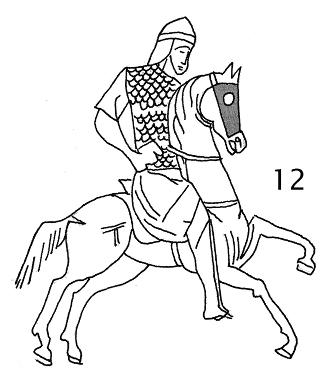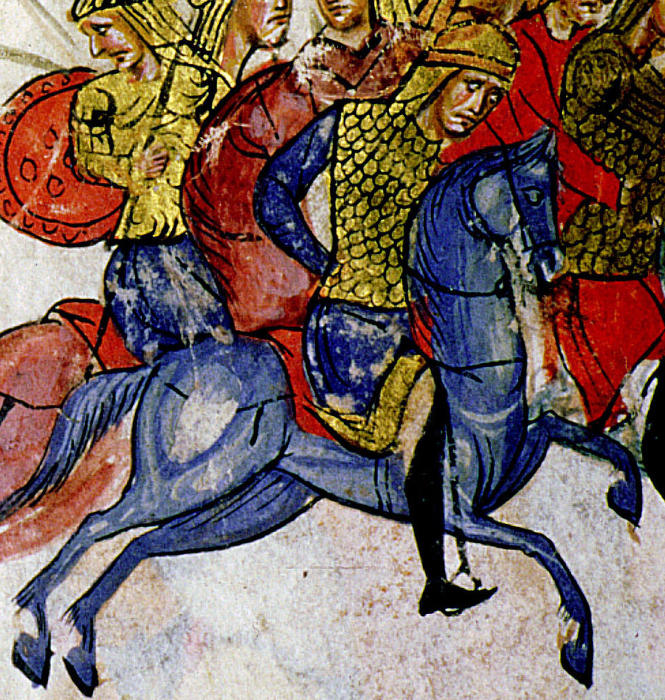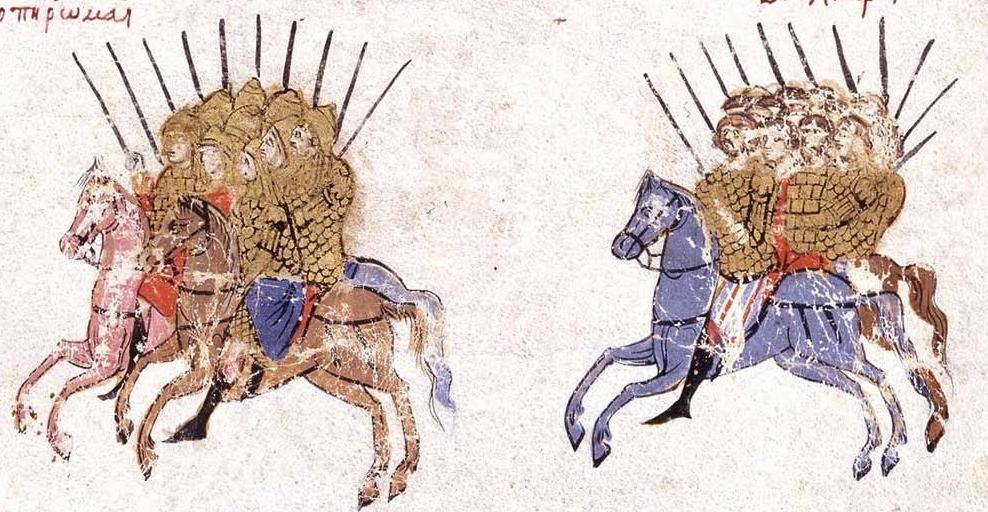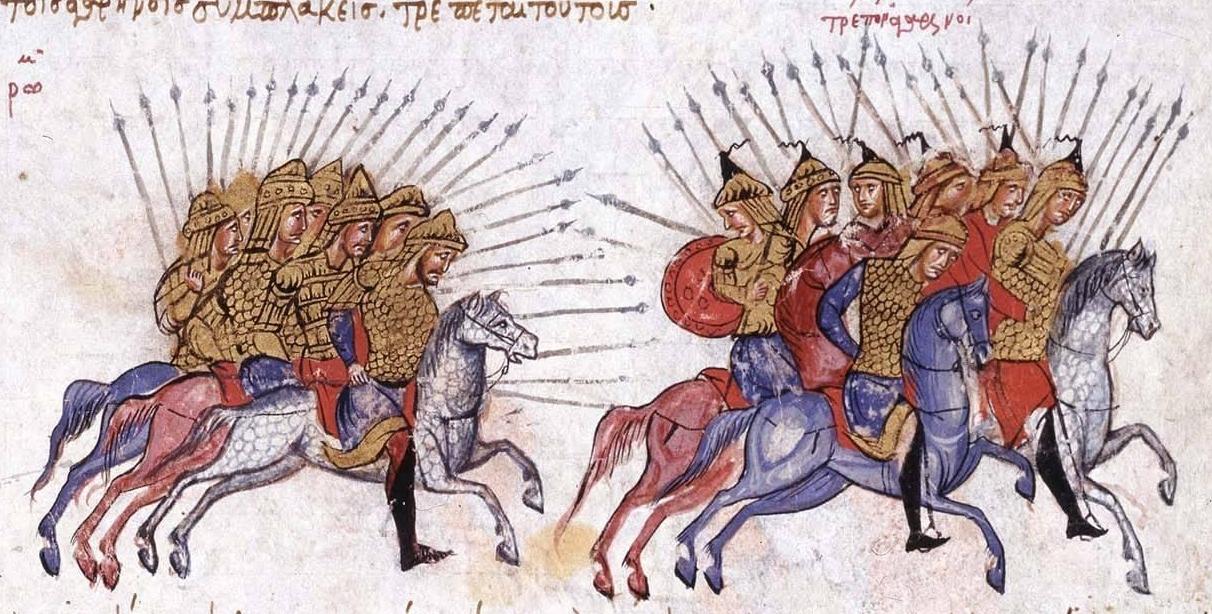A drawing of an Arab cavalry horse with chamfron in Scylitzes Chronicle appeared as fig. 609I in David Nicolle's 1982 PHD thesis: "The military technology of classical Islam"
It has appeared in subsequent publications and by other authors. It appears as follows in 'Horse Armour in the Medieval Islamic Middle East' by David Nicolle (2017):

Fig. 12. Fleeing Saracen, Skylitzes Chronicle, Siculo‑Byzantine, late 12th–early 13th century AD (Biblioteca Nacional, Cod/5‑3. N2, f.54v, Madrid).
The figure it is based on is

Folio 5v, 'Scylitzes Chronicle' – A battle between Byzantines and Arabs.
Although blue could be used to represent iron, this is a blue horse with a darker blue face (except for a blaze), dark blue mane, left fore-leg and lower right fore-leg.
There is no circular eye-hole, the eye is eye-shape.
Does this horse have a chamfron?
mirror site
Folio 5v, 'Scylitzes Chronicle' – A battle between Byzantines and Arabs.
Druzhina
Illustrations of Arab Costume & Soldiers
It has appeared in subsequent publications and by other authors. It appears as follows in 'Horse Armour in the Medieval Islamic Middle East' by David Nicolle (2017):

Fig. 12. Fleeing Saracen, Skylitzes Chronicle, Siculo‑Byzantine, late 12th–early 13th century AD (Biblioteca Nacional, Cod/5‑3. N2, f.54v, Madrid).
The figure it is based on is

Folio 5v, 'Scylitzes Chronicle' – A battle between Byzantines and Arabs.
Although blue could be used to represent iron, this is a blue horse with a darker blue face (except for a blaze), dark blue mane, left fore-leg and lower right fore-leg.
There is no circular eye-hole, the eye is eye-shape.
Does this horse have a chamfron?
mirror site
Folio 5v, 'Scylitzes Chronicle' – A battle between Byzantines and Arabs.
Druzhina
Illustrations of Arab Costume & Soldiers
Last edited:












